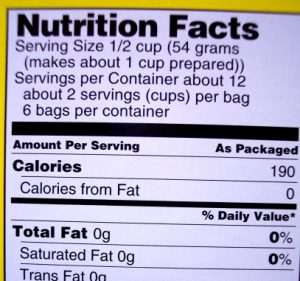The Sneaky Truth About Nutrition Labels And Serving Sizes
 If you’re a smart consumer, it’s normal to choose your foods based on the information you read on nutrition labels.
If you’re a smart consumer, it’s normal to choose your foods based on the information you read on nutrition labels.
But what if that information was actually skewing your purchasing choices?
A new study from Cornell’s Food and Brand Lab discovered that smaller recommended serving sizes on nutrition labels can lead people to buy more food than they need.
The researchers analyzed millions of food purchases in European food markets both before and after the introduction of front-facing nutrition labels. A total of 61 products were used in the study, which took place over two years.
Why do smaller serving sizes influence buying behavior?
The study found that shoppers bought more yogurt, for example, when the recommended serving size was smaller.
“Smaller recommended serving sizes will let all nutrition values on the label appear smaller too, independent of the product’s actual nutritional composition” says lead study author Dr. Ossama Elshiewy, from the University of Goettingen.
As a result, shoppers who see these smaller serving sizes will often attach a healthy association to these foods – a dangerous habit, the researchers said.
To avoid the trap, co-author Dr. Steffen Jahn recommends consumers always check the recommended serving size when reading nutrition labels.
“This will prevent you from underestimating nutrition amounts and will make your choices healthier,” Jahn said.
 Eating Disorder Self Test. Take the EAT-26 self test to see if you might have eating disorder symptoms that might require professional evaluation. All answers are confidential.
Eating Disorder Self Test. Take the EAT-26 self test to see if you might have eating disorder symptoms that might require professional evaluation. All answers are confidential.